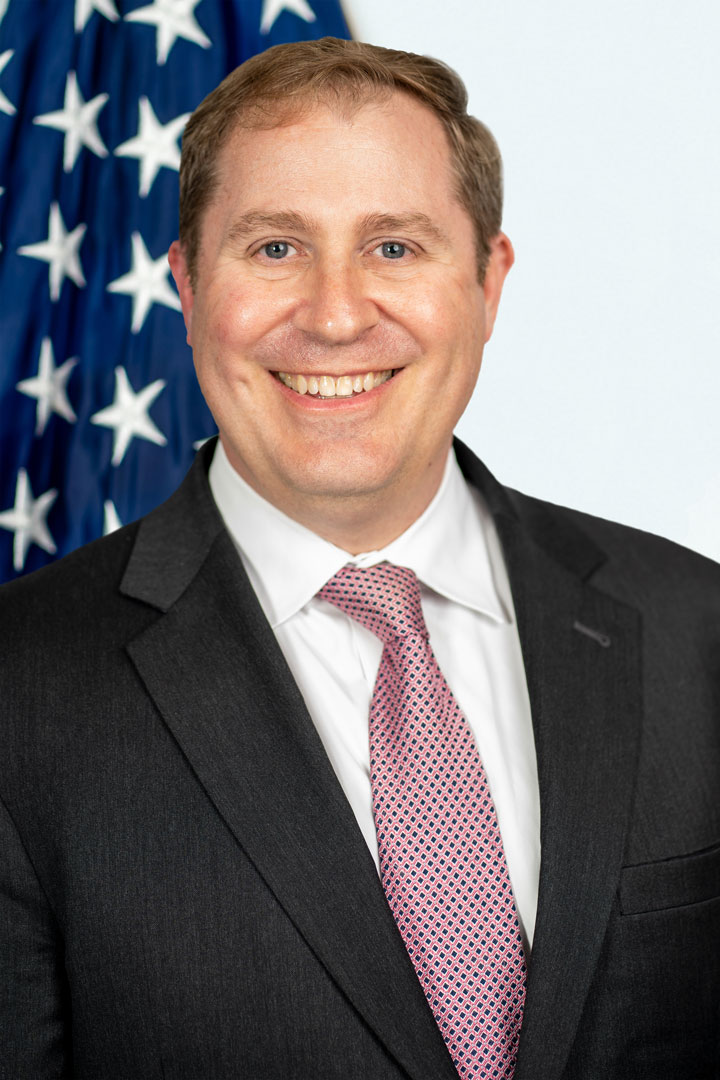From the Desk of the Science Director… Beating COVID Requires Radical Inclusion
June 30, 2020 | Download PDF
 Mr. Matt Quinn,
Science Director TATRC
Mr. Matt Quinn,
Science Director TATRC
Since joining TATRC in March, I have been immersed, mostly virtually, in The National Tele-Critical Care Network (NETCCN) project and other efforts to assist in defeating COVID. The pace and scope of our work has pushed just about every member of the TATRC team to the limit. Conceptualizing, planning and executing a project of the scale and importance of NETCCN has required TATRC to lean on not just our own staff but to work across other labs and with outside public and private partners in ways that we haven’t before. We call it “radical inclusion” - a concept that TATRC first heard about at the MRDC Leadership Conference that we adopted wholeheartedly. We could not have made the progress that we have in such a short time without fundamentally challenging our organizational structures, internal and external relationships.
NETCCN has required TATRC to work across labs. While Jeanette Little and her team at the Mobile Health Innovation Center (mHIC) have led the core NETCCN platform work, Mr. Geoff Miller and the Medical Modeling, Simulation & Visualization (MMSV) team led the development and execution of the clinical simulation work at the heart of NETCCN evaluation and down-selection. Rebecca Lee of TATRC’s Medical Intelligent Systems Laboratory (MISL) has worked closely with the Joint Artificial Intelligence Center, Johns Hopkins University Applied Physics Lab (JHU-APL), and Jeanette Little to inform the requirements and development of a research data commons to which NETCCN performers will contribute data. Moving forward, development of coherent and synchronized programmatics, evaluation of performance, the addition of further capabilities and other aspects of the project will continue to require working together in ways that our individual labs have not in the past. Some days it can be frustrating. But I’m proud of everyone’s hard work in focusing on this new mission and initiative.

NETCCN has required TATRC to leverage additional expertise and help from outside organizations. After the retirement of Dr. Gary Gilbert, two prominent staff from the Army Institute of Surgical Research (ISR) have played key roles on the NETCCN effort. Dr. Jose Salinas stepped in to lead the “virtual hospital” portion of the NETCCN initiative and work with the other labs in formulating and planning the integration of this important addition to the “core” NETCCN platform. MAJ Patty Schmidt of ISR has led the Data and Research Team, or ‘DART,’ for the NETCCN project. TATRC has needed the close coordination and insight from the MRDC Human Research Protection Office, Dr. Perrin Cobb of UCLA and the Society of Critical Care Medicine, JHU-APL and other entities. MAJ Schmidt has seamlessly managed this complex task – from Hawaii – with skill and resilience.
Dr. Peter Pappas of Central Florida Regional Hospital and Dr. Ben Scott of University of Colorado Hospital, have brought positive energy, insight and precious time split between delivering critical care – during the COVID pandemic no less – to lead NETCCN metrics and governance workgroups. We could not have done it without them. Our clinical partners from the Naval Medical Center San Diego, Ft. Leonard Wood, Missouri and the University of Colorado have also served and participated in simulation testing of 9 different NETCCN platforms each – a herculean effort to say the least.
Because the work of NETCCN, a digital health ecosystem, does not fit neatly into any single MRDC Program Area Directorate, TATRC has included not only Joint Program Committee (JPC-1) but also JPCs 5 (Military Operational Medicine Research Program) and 6 (Combat Casualty Care) in its weekly NETCCN meetings and other activities.
Finally, from the start, TATRC has included potential transition partners, including staff from the Department of Health and Human Services, in planning, evaluating and executing the NETCCN project. Staff from the Health Resources and Services Administration (HRSA), the Office of the Assistant Secretary for Preparedness and Response, Indian Health Service, the Office of the National Coordinator for Health IT have all contributed their insights and assistance (like the use of the HRSA-funded Telehealth Resource Centers) to advance NETCCN. Radical inclusion has paid off. Because of radical inclusion, TATRC received a record number of prospective performers at the performers’ conference that Medical Technology Enterprise Consortium hosted for its NETCCN project. TATRC truly had the pick of the proverbial litter because so many good performers knew about and applied for the NETCCN project. Because of radical inclusion, TATRC assembled a multi-faceted and incredibly diverse team to rapidly develop and refine extensive criteria and screened, reviewed and awarded dozens of applications in a matter of days. Because of radical inclusion, TATRC and its performers received actual clinical feedback on the performance of NETCCN platforms as part of the Task 1 evaluation. So many others have assisted on this journey and there is simply not enough space to list them all. That’s radical inclusion!
This article was published in the October 2020 issue of the TATRC Times.
 Mr. Matt Quinn,
Science Director TATRC
Mr. Matt Quinn,
Science Director TATRC
